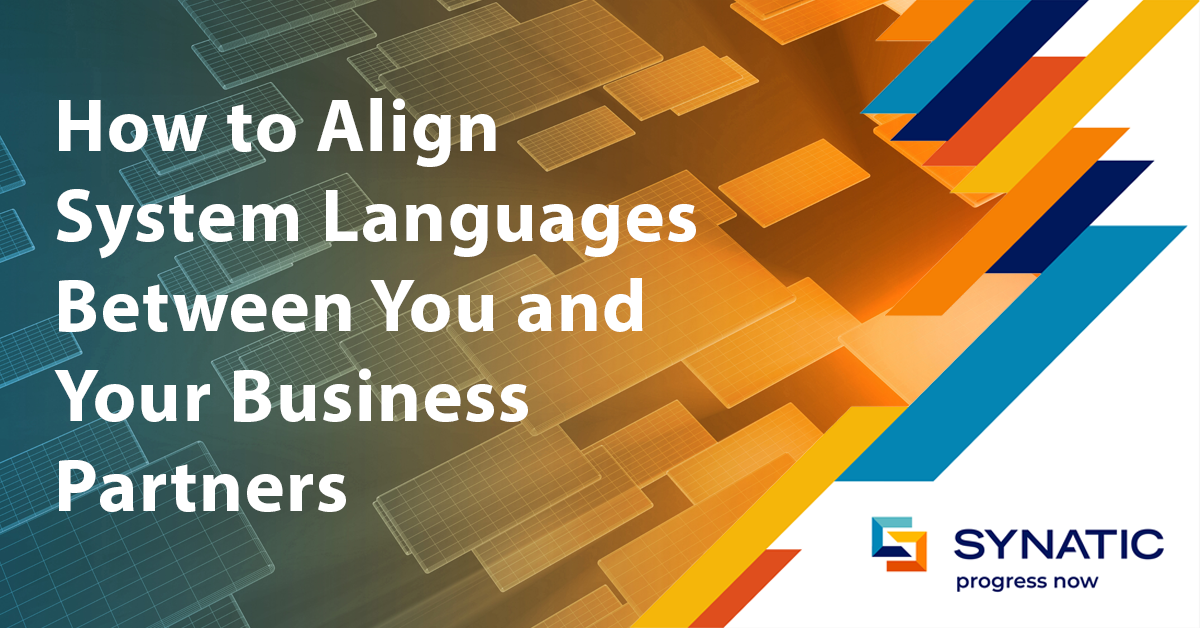
It is exceedingly rare these days for companies to provide their fax number on a letterhead but twenty years ago that was a common way for businesses to communicate with each other. Now in an increasingly digitalized world, businesses have replaced the fax and are integrating their systems with their partners using a method that ensures fast, secure, and clear messages are sent and received electronically. EDI (Electronic Data Interchange) is the de facto, global standard for the modern interchange of those messages.
EDI is the computer-to-computer exchange of business documents and information. It comprises a set of practices, standards, processes and technology that enables the free flow of information between different businesses that operate in the same ecosystem. EDI is a standard structure for systems to move data between each other so traditionally information communicated on paper, such as purchase orders and invoices. By automating these transactions, organizations can save time and eliminate costly errors caused by manual processing.
EDI works in two ways.
Messaging protocols define the format and structure of EDI messages. By translating internal data in a business document into a standardized EDI format, both parties in the communication can understand the content of the message. A number of global EDI standards have evolved since a group of companies created EDI in 1968.
ANSI X12 is a standard for EDI trading in the commercial and non-commercial sectors. Research from EDI basics states that there are more than 300,000 companies worldwide using the X12 EDI standard for business transactions. Another EDI protocol is HL7 which defines the standards for transferring clinical and administrative data between software applications in various administrative, financial, and clinical activities in the healthcare industry. For the insurance property and casualty business, AL3 is the protocol for batch communication of policy and commission data.
Using EDI delivers a number of benefits.
EDI has become a foundational technology for connecting business ecosystems. But there is a looming challenge - the data integration, infrastructure and skills needed to sustain and grow B2B transactions make EDI complex.
There is limited supply of skills in B2B commerce, so companies are facing a skills shortage. A common approach to resolve this is to use a Hybrid Integration Platform (HIP). With the graphical development interface of a HIP, the work of maintaining and developing EDI integrations is easier and faster. A HIP also ensures the reliability of digital business transactions and provides control and support of the services engagement.
For businesses wanting to integrate different parts of their business ecosystem, a HIP will have application connectors that allow organizations to integrate internal applications with external partners and their systems. A HIP will also help to orchestrate the business processes and data flows between systems.
As EDI grows, the volume and complexity of data is increasing. Working with other businesses involves different technologies and new B2B integration capabilities. Smaller organizations usually don't have the internal resources and outsource their needs to VANs. The problem is, VANs are expensive and not particularly quick to change. A HIP is more cost-effective and agile.
Businesses need to conduct business integration quickly and efficiently to increase business agility. A HIP provides the versatile toolset to ensure B2B integration by making the connecting of data, applications, trading partners, and business processes easier.

Synatic's Hybrid Integration Platform puts the technology needed for EDI back into the hands of the business and is also robust enough for your business’s IT needs. It empowers the organization to manage EDI transactions without a third party and reduces the costs and frustrations of using a VAN. Using a HIP reduces the time to deploy EDI integrations.
Synatic supports EDI integration using standard EDI message protocols such as HL7, AL3 and X12, as well as supporting transport protocols like HTTP/S, FTPS and SFTP. As APIs (application program interfaces) take over some of the functions of EDI, Synatic enables API integrations between internal and external systems so businesses can continue to innovate their B2B interactions.
With its graphical user interface, Synatic helps to simplify the process of configuring and changing partner communications. The Synatic platform enables greater visibility across B2B integrations and detailed reports provide information on EDI transactions in order to streamline tracking, error management and reconciliation.
Trading partners can be onboarded easily using Synatic’s EDI toolset and onboarding time can be reduced from days to hours.
The standard connectors and API integrations that Synatic offers to business systems such as accounting, ERP and CRM applications simplifies data exchange.
EDI has been used for several decades, and despite stories of its demise, it has remained the standard for B2B communications. One reason for its stability is, quite frankly, inertia. EDI gets the job done, and more importantly, everyone uses it. APIs are rising in significance and a major shift to APIs could be done as they are well suited to B2B integration and could provide faster system integration. However, all members of an ecosystem, particularly larger businesses, would have to agree to move. With the help of a platform like Synatic, mass adoption of APIs could be achieved.
According to Gartner APIs complement rather than replace EDI.
"Application leaders should use API capabilities to add new channels, enable automation and optimize their business ecosystem for digital business."
By adopting an integration platform like Synatic's Hybrid Integration Platform, businesses can simplify their EDI integrations, reduce the costs of the integration, speed up transactions, and have a platform ready for deploying APIs when business partners are ready to make use of them.